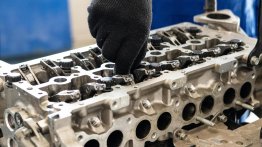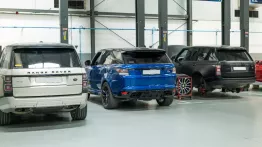Ever wondered what happens during an auto inspection?
Navigating car care can be tough, but learning about the auto inspection process can help. This guide breaks down each step, from checking safety parts to making sure emissions are right.
Knowing what happens can make you feel at ease, whether you're getting a routine check or buying a used car. See how a good auto inspection keeps cars safe and ready for the road, protecting you and your loved ones.
Dive in to learn more!
Check Exterior Lights
Making sure all exterior lights work is very important for safety. This part of the auto inspection looks at headlights, brake lights, turn signals, and hazard lights. Broken lights can cause accidents and get you a ticket, so it's important to fix or replace any bad bulbs.
Car appraisal experts say that working lights show the car is well taken care of. Good lights not only keep you safe but also help in a good vehicle appraisal, making sure the car meets safety rules and keeps its value.
Test Windshield Wipers and Washer Fluid
Checking windshield wipers and washer fluid is a key part of an auto inspection. This step ensures you have a clear view while driving, especially in severe weather. Start by turning on the wipers to see if they move smoothly without streaking.
If they leave streaks, it might be time to replace the blades. Next, make sure the washer fluid sprays out correctly. If the fluid level is low, fill it up. Working wipers and enough washer fluid help keep your windshield clean and improve safety.
Car evaluation experts stress the importance of this step for safe driving. Properly working wipers and washer fluid can also impact the overall car evaluation, showing that the vehicle is well-maintained.
Inspect Tires and Wheels
Looking at the tires and wheels is a critical part of the auto inspection process. This step ensures the tires are in good shape and safe to drive on. Check the tire tread to make sure it's not too worn down.
Also, look for any cracks, bulges, or nails that could cause a flat. Don't forget to check the air pressure in each tire, making sure it matches the recommended levels. Inspect the wheels for any damage or dents.
Car experts say that good tires and wheels are key to vehicle quality assessment. Properly maintained tires and wheels not only keep you safe but also show that the car is well cared for. This helps in making a positive impression during a vehicle quality assessment.
Examine Brakes
Checking the brakes is a vital part of any auto inspection. Begin by looking at the brake pads and rotors for any signs of wear or damage. Worn-out pads can lead to longer stopping distances and unsafe driving conditions.
Listen for any unusual noises when the brakes are applied, as squeaking or grinding sounds often indicate problems. Make sure the brake fluid is at the proper level, as low fluid can affect braking performance.
Test the brake pedal to ensure it feels firm and responsive. Properly working brakes are essential for safety, helping prevent accidents and ensuring the car stops as it should.
Regular brake checks not only keep you and others safe on the road but also show that the car is well-maintained. This attention to detail can make a big difference in the car's overall condition and reliability.
Review Steering and Suspension
Checking the steering and suspension is a key part of an auto inspection. Start by turning the wheel to see if it moves easily and without strange noises. Feel for any wobbling or pulling to one side, which could mean alignment issues.
Next, look at the suspension by pressing down on each corner of the car to see if it bounces back smoothly. Worn-out shocks or struts can affect ride comfort and handling.
Listen for clunks or squeaks when driving over bumps, as these sounds often signal problems. Properly working steering and suspension are crucial for safe driving, helping the car handle well and stay stable on the road.
Regular checks ensure the vehicle is in good shape and can prevent bigger issues down the line. This step shows that the car is well-maintained and ready for any journey.
Check Exhaust System
Looking at the exhaust system is an important part of an auto inspection. Check for any rust, holes, or leaks in the exhaust pipes and muffler. Listen for strange sounds like hissing or loud rumbling, which may mean there are problems.
A good exhaust system helps reduce harmful smoke and keeps the engine running well. It also ensures the car meets clean air rules. Regular checks can find problems early, saving money on repairs later.
Keeping the exhaust system in good shape helps the car run better and keeps the air cleaner.
Test Battery and Electrical System
Checking the battery and electrical system is a key part of an auto inspection. First, look at the battery for any cracks or leaks. Test its charge using a voltmeter to ensure it's strong enough to start the car. Also, check the battery terminals for corrosion.
Examine the car's wiring and fuses to make sure everything is connected properly and there are no signs of wear. A well-maintained electrical system ensures all the car's gadgets work, including lights, radio, and power windows.
Regular checks help avoid unexpected breakdowns and keep the car running smoothly.
Inspect Fluids
Checking the fluids is an essential step in an auto inspection. Start by looking at the engine oil, making sure it's clean and at the right level. Next, check the coolant to ensure it's filled and free of debris.
Look at the brake fluid to see if it's at the proper level and clear, not cloudy. Also, inspect the transmission fluid and power steering fluid to make sure they are both clean and at the correct levels. Regular fluid checks help keep the car running smoothly and prevent costly repairs in the future.
Wrapping Up Your Auto Inspection Journey
By understanding each step of the auto inspection process, you are now equipped to keep your vehicle in top shape. Regular auto inspections help identify issues before they become major problems, saving time and money.
With this knowledge, you can ensure your car runs smoothly and safely. Remember, a well-maintained vehicle not only performs better but also lasts longer.
Did you find this article helpful? You can check out our website for more awesome content like this.






















